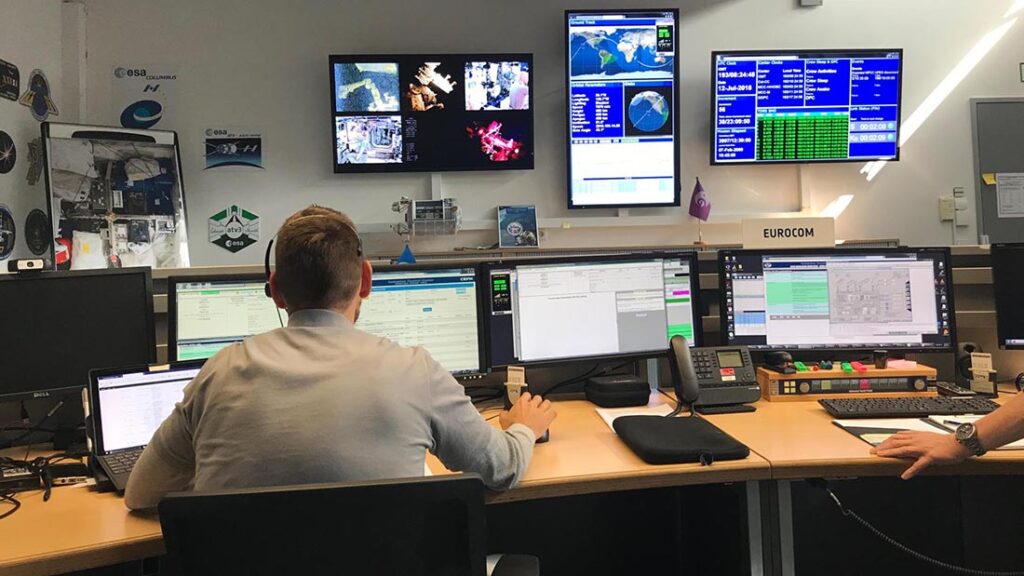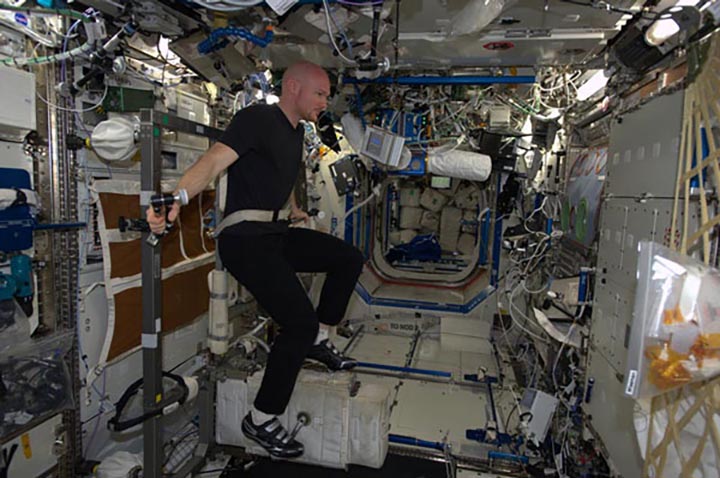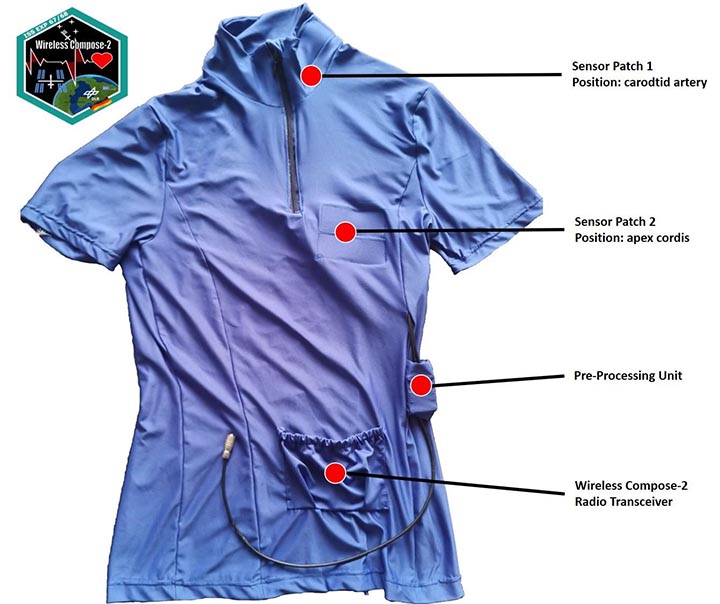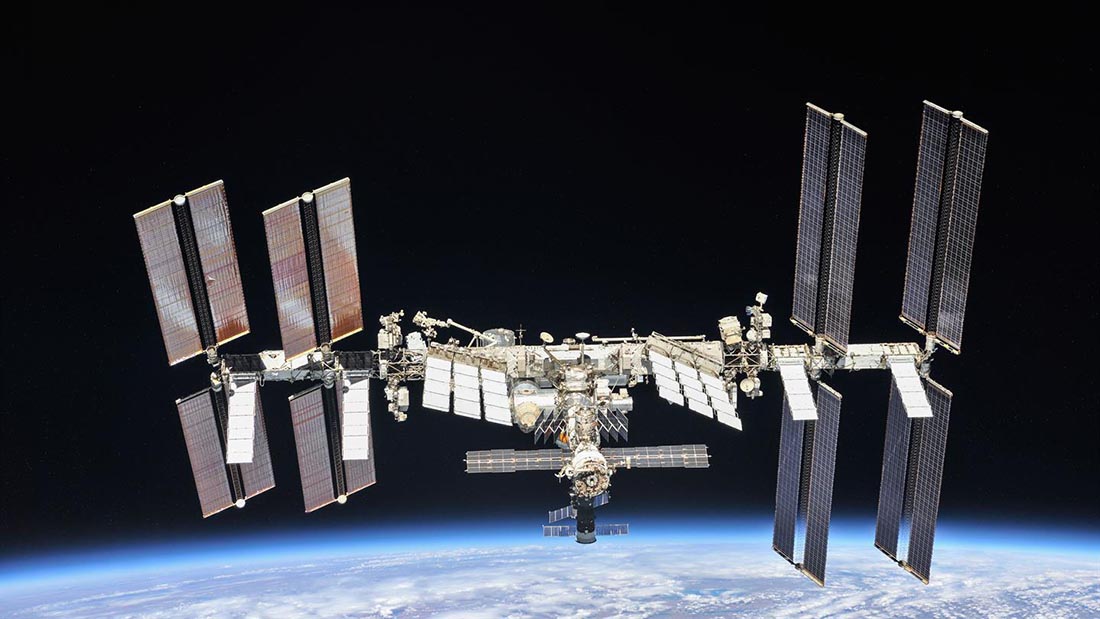Wireless Compose-2: A Wireless Communication Network with a Ballistocardiography Smart-Shirt Experiment in the ISS Columbus Module
Evaluating the effects of the environment of space on the human cardiovascular system was at the forefront of the recent Wireless Compose-2 (WICO2) project. Using the new SmartTex shirt, which was developed by the German Aerospace Center (DLR) in cooperation with DSI Aerospace Technology, the medical faculty of Bielefeld University and textile research partner Hohenstein, the SmartTex shirt uses integrated sensors to transfer physiological data from astronauts on the International Space Station (ISS) to Earth via a wireless communication network. Essentially, the SmartTex shirt monitors the performance of an astronaut’s cardiovascular system in space, and the physiological changes to that system during a long-term space mission.
Science objectives for everyone – but first, space
The main scientific goal of the Wireless Communication Network (Wireless Compose-2) investigation is to provide a flexible and adaptable wireless network infrastructure to conduct and execute low-power, low-weight, and wireless experiments on the ISS. For this demonstration, Wireless Compose-2 operates several experiments, including an experiment to examine the impact of the space environment on the cardiovascular system. Additionally, Wireless Compose-2 demonstrates newly developed impulse radio ultra-wide-band (IR-UWB) hardware to enable precise localization applications and to analyze the energy harvesting potential on the ISS.

The Wireless Compose-2 investigation demonstrates the operations of a wireless network for sensor monitoring, or general data transmission, based on the impulse radio ultra-wide-band (IR-UWB) and records the signal quality of the IR-UWB-based network.
Additionally, Wireless Compose-2 operations include the:
- Operation of the Ballistocardiography for Extraterrestrial Applications and long-Term missions (BEAT) experiment to monitor and acquire ballistocardiography (BCG) data of an ISS crew member.
- At the signal level – make observations of the variation of BCG signals over the course of a long-duration mission in space.
- At the cardiac level – conduct the mapping of BCG signals with cardiac conditions of ISS crew members.
- At the application level – carry out a feasibility study of BCG as health monitoring for long term missions.
- Feasibility of SmartTex, a Smart-Shirt with integrated sensors to demonstrate a textile-integrated body area network under microgravity conditions.
- Demonstration of the IR-UWB ranging capabilities to achieve an accuracy of less than 10cm.
- Investigation of the parameters of the light sources to improve the energy harvesting capabilities.
Testing phases & results
The Wireless Compose-2 technology demonstrator is based on the technology used for the Wireless Compose investigation in 2018. Wireless Compose-2 demonstrates the capabilities of wireless networks for scientific, localization, and medical experiments on the ISS.
The focus lies on the Ballistocardiography for Extraterrestrial Applications and long-Term missions (BEAT) experiment, which is a demonstration of novel ballistocardiography (BCG) sensors monitoring important cardiovascular parameters in the microgravity environment. It enables the access to relevant heart parameters like the relative blood pressure, but also provides details about contraction rate and valve opening/closing times – which is normally only accessible via sonography or computer tomography (CT). Therefore, BEAT enables deep insight into the cardiovascular system’s performance in space, and its changes during a long-term space mission.
The sensors are implemented into SmartTex, which is a Smart-Shirt with integrated sensors,
wiring, and a communication module to transmit the scientific data via the wireless link to the base station.
SmartTex’s testing is part of the Wireless Compose-2 project utilizing data from ESA astronaut Dr. Matthias Maurer, who left on his six months ‘Cosmic Kiss’ mission on the International Space Station (ISS) on November 11, 2021, with the shirt in his luggage.
The SmartTex shirt is intended to provide a continuous picture of the vital functions of astronauts, which will be particularly relevant for future long-term manned space missions to the Moon and Mars. Future transfer of the SmartTex technology to fitness and telemedicine applications is expected.
“During the previous Spacetex (2014) and Spacetex2 (2018) projects, we gathered valuable data on the interaction of the body, clothing and climate under microgravity conditions,” explains Hohenstein Senior Scientific Expert, Dr. Jan Beringer. The comfort and material insights provided by those experiments with ESA astronaut Dr. Alexander Gerst have been incorporated into Hohenstein’s design of the new SmartTex shirt. “Dr. Maurer can wear his tailor-made shirt comfortably during everyday work on the ISS. We used his body measurements for pattern development and production. We also integrated the sensors, data processors and communication modules into the shirt so that they interfere as little as possible and are always positioned in the right place, regardless of the wearing situation. This is the prerequisite for reliable measurement of physiological data.”

The sensors are implemented into SmartTex, which is a Smart-Shirt with integrated sensors, wiring, and a communication module to transmit the scientific data via the wireless link to the base station. The Smart-Shirt provides an integrated and comfortable everyday clothing with customized fit and “stay-in-place” function in micro-g environments, easy to use for Body Area Sensing, and does not interfere with an astronaut’s daily work. Future applications can be both on the ISS (space travel low-Earth orbit, Lunar, Cis-Lunar), and on Earth (new, highly integrated sports textiles/Body Area Networks).
Wireless Compose-2 analyzes the capabilities of energy harvesting within the Columbus module. This also was part of the Wireless Compose investigation but failed due to the very low light intensity and some design trades of the modules. Wireless Compose-2 provides more sensors for light analysis, as well as improved test circuits for gathering more detailed information about the light sources.
Moreover, Wireless Compose-2 demonstrates an improved localization technology based on IR-UWB to achieve accuracies below 1 cm, which can be utilized to precisely control and navigate free-flying objects and supporting systems, like CIMON successors.
Wireless Compose-2 is an updatable and adaptable network, and thereby provides an infrastructure for future scientific and medical experiments.
This can lead to a more flexible implementation of this technology in health monitoring equipment on Earth.
Space applications
The ISS is also a testbed to demonstrate the capabilities of a Wireless Sensor Network (WSN) for the future and post-ISS activities. The evaluation of the investigation helps analyze potential uses of the technology for future robotic and crewed spaceflight, and to derive obstacles and limitations for the operations in very specific environments comparable to ISS modules.
This investigation also enables the development of novel smart technologies for the monitoring of critical health parameters of astronauts and provides a new concept to navigate free-flying objects with an accurate resolution of less than 10cm in an enclosed micro-gravity environment – as expected in the ISS modules. The data gathered from the BEAT experiment is of high interest for further scientific examinations for future health-monitoring systems in space, and a possible technology transfer in terrestrial applications.

Earth applications
The results of the BEAT experiment recorded in the microgravity environment of the ISS offers a perfect ground-truth for ballistocardiography measurements in terrestrial applications. This can lead to a more flexible implementation of this technology in health monitoring equipment on Earth. The wireless sensor network serves as a testbed for a reliable network protocol implementation that could be employed in critical industrial control applications. Additionally, the precise ranging capabilities of the IR-UWB system could be applied in asset tracking systems.
Study leadership
PRINCIPAL INVESTIGATORS
Martin Drobczyk – DLR e.V., Bremen, Germany
Christian Strowik – DLR e.V., Bremen, Germany
Andre Lübken – DLR e.V, Bremen, Germany
CO-INVESTIGATORS/COLLABORATORS
Ulf Kulau, Dr.-Ing – DSI Aerospace Technology GmbH, Bremen, Germany
Urs-Vito Albrecht, Prof. Dr. – Medizinische Hochschule, Hannover, Germany
Jan Beringer, Dr. – Hohenstein Laboratories GmbH & Co. KG, Boennigheim, Germany
DEVELOPERS
Deutsches Zentrum für Luft- und Raumfahrt e.V. (DLR) – Bremen, Germany
DSI Aerospace Technology GmbH (DSI) Bremen, Germany
University of Technology Hamburg (TUHH) Hamburg, Germany


